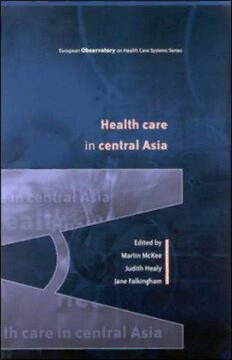
Health Care in Central Asia (European Observatory on Healh Care Systems) PDF
239 Pages·2002·0.765 MB·English
Most books are stored in the elastic cloud where traffic is expensive. For this reason, we have a limit on daily download.
Preview Health Care in Central Asia (European Observatory on Healh Care Systems)
Description:
Central Asia remains one of the least known parts of the former Soviet Union. The five central Asian republics gained their unexpected independence in 1991. They have faced enormous challenges over the last decade in reforming their health care systems, including adverse macro-economic conditions and political instability. To varying extents, each country is diverging from a hierarchical and unsustainable Soviet model health care system. Common strategies have involved devolving the ownership of health services, seeking sources of revenue additional to shrinking state taxes, 'down-sizing' their excessive hospital systems, introducing general practitioners into primary care services, and enhancing the training of health professionals. This book draws on a decade of experience of what has worked and what has not. It is an invaluable source for those working in the region and for others interested in the experiences of countries in political and economic transition.
See more
The list of books you might like
Most books are stored in the elastic cloud where traffic is expensive. For this reason, we have a limit on daily download.
